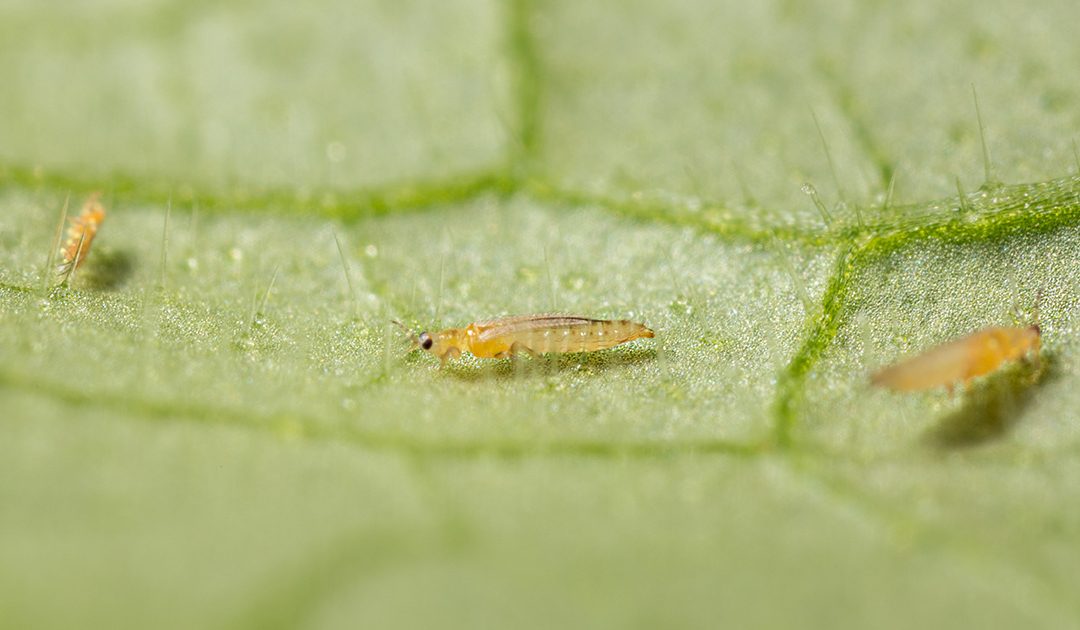Contents
How to Spot and Treat Thrips on Indoor Plants Naturally
Thrips are tiny, winged insects that can cause big problems for houseplant lovers. These pests feed on plant sap, leaving behind damaged leaves, distorted growth, and a stressed plant. If left untreated, thrips can spread quickly and infest multiple plants. Fortunately, there are natural ways to identify, treat, and prevent thrips on indoor plants.
What Are Thrips?
Thrips are small, slender insects usually less than 1mm long. They can be yellow, black, or brown, and they move quickly, making them hard to spot. Adult thrips have fringed wings, while the larvae are wingless and even harder to see.
They damage plants by piercing leaves and sucking out the sap. Over time, this weakens the plant and can lead to stunted growth or leaf loss.
Signs of Thrips on Indoor Plants
Look out for these common symptoms:
Silvery or streaked patches on leaves.
Black specks (thrip droppings) on leaf surfaces.
Deformed leaves or buds.
Stunted growth in young plants.
Tiny insects moving quickly on leaves if examined closely.
Tip: Shake a leaf over white paper—tiny moving dots may be thrips.
Natural Ways to Treat Thrips
1. Neem Oil Spray
Mix 2 teaspoons neem oil with 1 liter of water and a few drops of mild soap.
Spray the entire plant, focusing on leaf undersides.
Repeat every 7 days until thrips are gone. Try this organic neem oil for plants on Amazon.
2. Insecticidal Soap
Mix 1–2 teaspoons mild liquid soap with water.
Spray weekly to smother thrips.
Safe for most houseplants if used correctly.
3. Sticky Traps
Place yellow or blue sticky traps near plants.
These catch adult thrips and reduce populations.
4. Rubbing Alcohol Wipe
Dilute 1 part rubbing alcohol with 3 parts water.
Wipe affected leaves with a cloth to kill thrips on contact.
5. Pruning Heavily Infested Areas
Remove and dispose of heavily damaged leaves.
Always sterilize tools afterward.
Preventing Thrips Indoors
Inspect new plants before introducing them indoors.
Wipe leaves regularly to remove dust and pests.
Avoid over-fertilizing, which attracts pests to soft new growth.
Increase humidity—thrips thrive in dry environments.
Check weekly to catch infestations early.
A plant care kit with sticky traps and tools can help keep thrips under control.
FAQs About Thrips on Indoor Plants
Q: Are thrips harmful to humans?
A: No, thrips don’t bite humans or pets—they only damage plants.
Q: Can thrips spread to all my houseplants?
A: Yes, thrips can spread quickly between plants, so isolate affected plants immediately.
Q: How long does it take to get rid of thrips?
A: With consistent treatment, you can eliminate thrips in 3–4 weeks.
Final Thoughts on Treating Thrips Naturally
Thrips may be tiny, but they can cause serious harm to indoor plants if left unchecked. With natural solutions like neem oil, insecticidal soap, and sticky traps, you can eliminate thrips without harsh chemicals. Prevention is key—inspect new plants, maintain good humidity, and monitor regularly to keep your indoor garden thriving.
Learn more about thrips and other plant pests from the RHS guide on houseplant pests.

